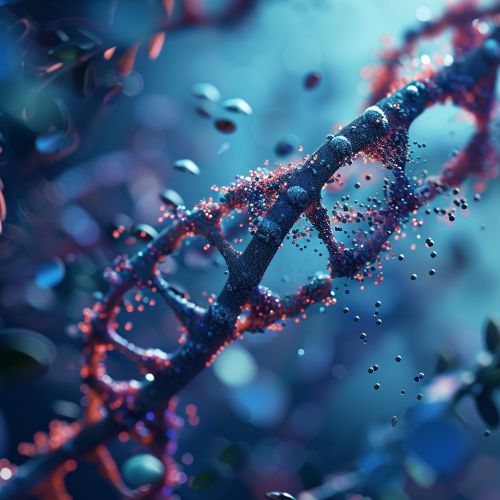Transcription activator-like effector nuclease
Overview
Transcription activator-like effector nucleases (TALENs) are a class of engineered nucleases that can be used to modify DNA sequences in a targeted manner. TALENs are derived from proteins secreted by Xanthomonas bacteria when they infect plants. These proteins bind to specific DNA sequences in the plant's genome, leading to the activation of certain genes that help the bacteria establish an infection.


Structure and Function
TALENs are composed of two main parts: a DNA-binding domain and a nuclease domain. The DNA-binding domain is made up of a series of 33-35 amino acid repeats, each of which recognizes a single base pair in the DNA sequence. The nuclease domain is derived from the FokI endonuclease and is responsible for cleaving the DNA once the TALEN has bound to its target sequence.
The DNA-binding domain of a TALEN can be engineered to recognize any DNA sequence, allowing TALENs to be used as customizable tools for genome editing. When a pair of TALENs bind to a target DNA sequence, their nuclease domains come together and introduce a double-strand break in the DNA. This break can then be repaired by the cell's own repair machinery, often introducing small insertions or deletions that can disrupt the function of a gene.
Applications
TALENs have a wide range of applications in both basic research and clinical settings. In basic research, they can be used to create knockout organisms or cell lines, allowing scientists to study the function of specific genes. In a clinical setting, TALENs can be used to correct genetic mutations that cause disease, a technique known as gene therapy.
One of the main advantages of TALENs over other genome editing tools, such as CRISPR-Cas9, is their specificity. Because each repeat in the DNA-binding domain of a TALEN recognizes a single base pair, TALENs can be designed to target almost any DNA sequence, reducing the risk of off-target effects.
Limitations and Challenges
Despite their potential, there are several challenges associated with the use of TALENs. One of the main challenges is the difficulty of delivering TALENs into cells. Because TALENs are large proteins, they cannot easily cross the cell membrane, and must therefore be delivered using methods such as electroporation or viral vectors, which can be inefficient or carry risks.
Another challenge is the risk of off-target effects. Although TALENs are highly specific, they can still bind to and cleave off-target sites that have a similar sequence to the target site. This can lead to unintended modifications to the genome, which can have harmful effects.
Finally, the process of designing and constructing TALENs is complex and time-consuming, which can limit their use in a research or clinical setting.
Future Directions
Despite these challenges, research into TALENs is ongoing, with many groups working to improve their efficiency, specificity, and ease of use. For example, new methods are being developed to deliver TALENs into cells more efficiently, and strategies are being explored to reduce off-target effects.
In addition, TALENs are being combined with other genome editing tools, such as CRISPR-Cas9, to create hybrid systems that combine the advantages of both technologies. These hybrid systems could potentially offer greater specificity and flexibility than either technology alone.
